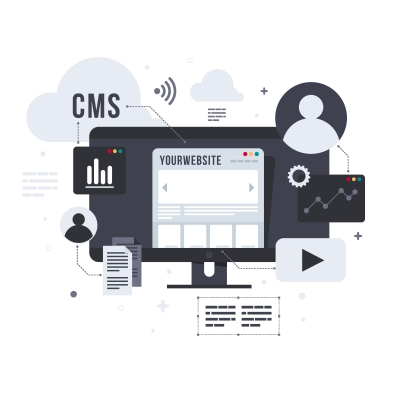
Content Management System (CMS)
A Content Management System (CMS) is a software application that enables organizations to create, manage, and publish digital content efficiently. It provides tools and workflows for content authoring, editing, version control, and publishing across websites, intranets, and other digital channels.
Key Components of CMS:
- Content Authoring and Editing:
A user-friendly interface for content creators to author and edit text, images, videos, and other multimedia content without requiring technical expertise.
- Content Organization:
Tools for organizing content hierarchically, categorizing content using taxonomies, and defining metadata to facilitate content discovery and navigation.
- Workflow Management:
Workflow automation features for managing content review, approval, and publishing processes, enabling collaboration among content contributors and stakeholders.
- Version Control:
Versioning capabilities to track changes to content over time, maintain a history of revisions, and revert to previous versions if necessary.
- Content Delivery:
Content delivery mechanisms for publishing content to multiple channels and devices, including websites, mobile apps, email newsletters, and social media platforms.
CMS Strategy
A CMS strategy outlines the vision, objectives, and roadmap for leveraging a content management system to achieve business goals, enhance customer experiences, and streamline content operations.
Key Components of CMS Strategy:
- Business Objectives:
Define clear business objectives and key performance indicators (KPIs) for the CMS implementation, such as improving content quality, increasing website traffic, and enhancing user engagement.
- Content Governance:
Establish content governance policies and guidelines to ensure consistency, accuracy, and compliance with brand standards, legal requirements, and industry regulations.
- Audience Segmentation:
Identify target audiences and user personas to tailor content strategies and personalize experiences based on user preferences, behaviors, and demographics.
- Content Lifecycle Management:
Define content lifecycle stages from creation to archival, specifying roles and responsibilities for content stakeholders and implementing workflows for content review, approval, and expiration.
- Integration and Scalability:
Evaluate integration capabilities with third-party systems and services, such as customer relationship management (CRM) platforms, e-commerce solutions, and marketing automation tools, to enhance functionality and scalability.
CMS Architecture
CMS Architecture refers to the design and infrastructure of the content management system, including its components, modules, and underlying technologies.
Key Aspects of CMS Architecture:
- Content Repository:
A centralized repository or database for storing and managing content assets, supporting features such as versioning, access control, and content indexing for search.
- User Interface:
A responsive and intuitive user interface for content authors, editors, and administrators to interact with the CMS, featuring customizable templates, drag-and-drop editors, and content preview capabilities.
- Security and Access Control:
Robust security mechanisms to protect sensitive content and prevent unauthorized access, including user authentication, role-based access control (RBAC), and encryption of data in transit and at rest.
- Scalability and Performance:
Scalable architecture design to handle growing volumes of content and user traffic, with optimizations for performance, caching, and content delivery networks (CDNs) to ensure responsive user experiences.
- Customization and Extensibility:
Extensibility features and APIs for customizing and extending the functionality of the CMS, integrating with external systems, and developing custom modules and plugins to meet specific business requirements.
CMS Implementation
CMS Implementation involves the deployment, configuration, customization, and optimization of the content management system to support content creation, management, and delivery workflows.
Key Steps in CMS Implementation:
- Platform Selection:
Evaluate CMS platforms based on features, functionality, scalability, cost, and support options, selecting a solution that aligns with organizational requirements and strategic objectives.
- Installation and Configuration:
Install and configure the CMS software according to best practices, setting up user accounts, permissions, and site settings to establish a secure and stable environment.
- Content Migration:
Migrate existing content from legacy systems or external sources into the CMS, ensuring data integrity, formatting consistency, and metadata preservation during the migration process.
- Customization and Theming:
Customize the look and feel of the CMS website by designing and implementing custom themes, templates, and stylesheets to reflect brand identity and user experience design principles.
- Training and Support:
Provide training and documentation to educate content creators, editors, and administrators on how to use the CMS effectively, offering ongoing support and troubleshooting assistance as needed.











